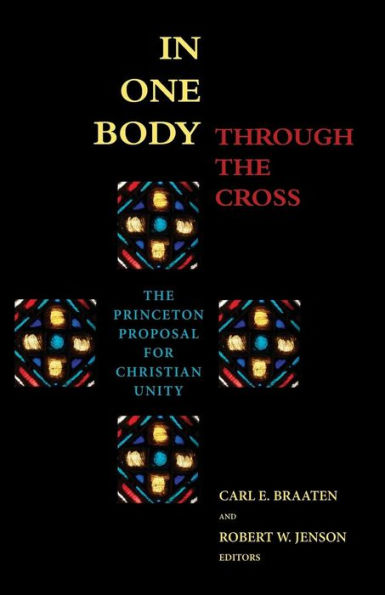Read an Excerpt
In One Body through the Cross
The Princeton Proposal for Christian Unity
Wm. B. Eerdmans Publishing Company
Copyright © 2003 Wm. B. Eerdmans Publishing Company
All right reserved. ISBN: 0-8028-2298-3
Chapter One
To the Churches of North America, Judicatories, Ecumenical Agencies, Ecumenical Officers, Laity and Clergy
Dear Colleagues:
The following document is the work of sixteen theologians and ecumenists, gathered from across the ecumene, who met for three years at Princeton, New Jersey, to consider what may be called the ecclesiology of ecumenism. In its form, the project was modeled on the Groupe des Dombes, founded in 1937, which pioneered many of the insights and formulations that enabled the successes of the post-Vatican II dialogues. The members of the Groupe des Dombes were not appointed by their Catholic, Reformed and Lutheran churches, and did not attempt to speak for them. Similarly the Princeton group was instituted and its members were chosen by an independent ecumenical foundation, the Center for Catholic and Evangelical Theology. The unofficial character of the Princeton Project provided members freedom to reflect creatively on the present situation and future possibilities of modern ecumenism. With this report, they do not claim to speak for their churches, but hope to speak to all the churches, out of shared concern for the founding ecumenical imperative "that they all may be one ... so that the world may believe" (John 17:21).
TheCenter for Catholic and Evangelical Theology called the group together following consultations which showed wide consensus that both the ecumenical movement itself and the churches' commitment to it were stalled in place. "Reception" by the churches of consensus achieved in dialogues is even more difficult than expected. Some key points of division have proven unexpectedly stubborn. The institutions of conciliar ecumenism are largely captive to a "new ecumenical paradigm" which subordinates the concern of the "faith and order" movement, for the visible unity of Christians, to social and political agendas which are themselves divisive. The wisdom of the first general secretary of the World Council of Churches, Willem Visser 't Hooft, "The World Council of Churches is either a christocentric movement or it is nothing at all," now carries little weight. Perhaps most distressing, the churches that once principally carried the movement have turned their energies to other matters, often to their own internal divisions.
It is not that modern ecumenism has not achieved much, more than could once have been dreamt of. The bilateral dialogues have created a remarkable body of creative and ecumenically shared theology; particularly the "communion ecclesiology" is influential in many churches' thinking. Baptism, Eucharist and Ministry, produced by the Faith and Order Commission of the World Council, achieved unheard-of consensus by rooting itself in the apostolic tradition, and has been widely studied. The signing of the Joint Declaration on the Doctrine of Justification by the Roman Catholic Church and the Lutheran World Federation "consigned to oblivion" the mutual condemnations of the Reformation era. There have even been actual restorations of fellowship between separated churches. But the great divisions remain, and few see a way forward.
We will not in this preface further preempt the document. We say only that we fully approve the results to which the consultation has in fact come.
For the Center for Catholic and Evangelical Theology
Carl E. Braaten Executive Director
Robert W. Jenson Associate Director
(Continues...)
Excerpted from In One Body through the Cross Copyright © 2003 by Wm. B. Eerdmans Publishing Company . Excerpted by permission.
All rights reserved. No part of this excerpt may be reproduced or reprinted without permission in writing from the publisher.
Excerpts are provided by Dial-A-Book Inc. solely for the personal use of visitors to this web site.




